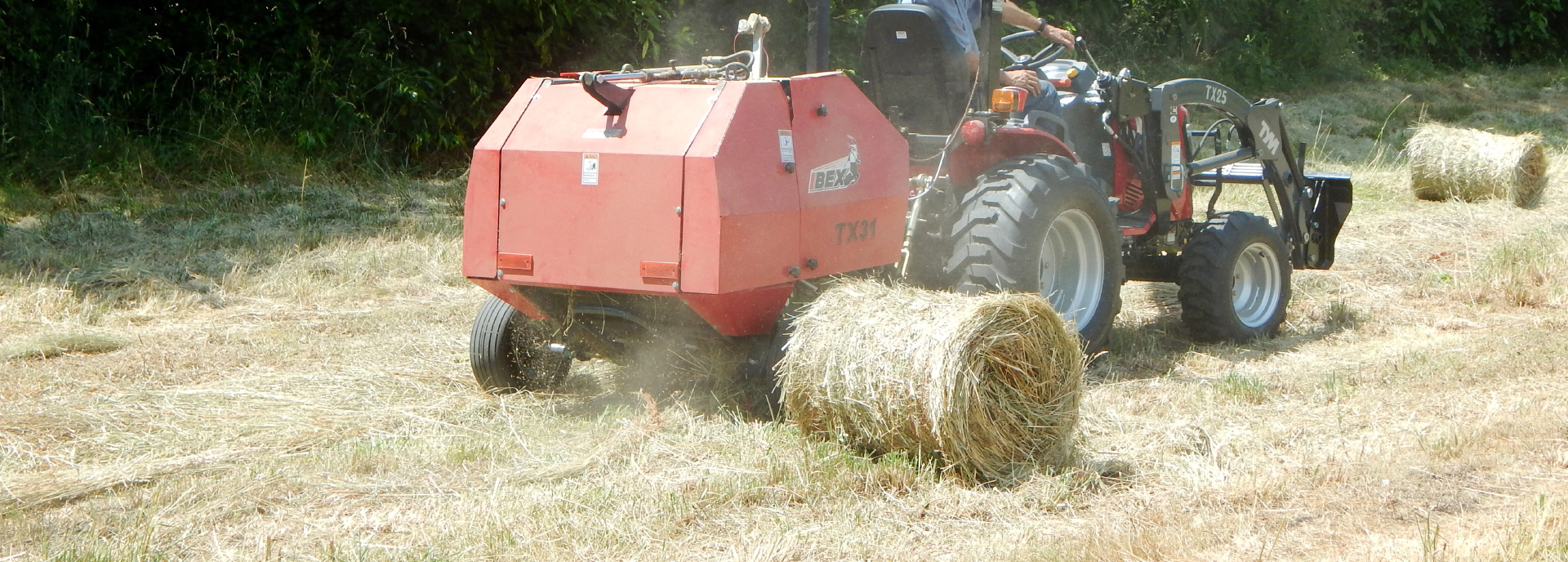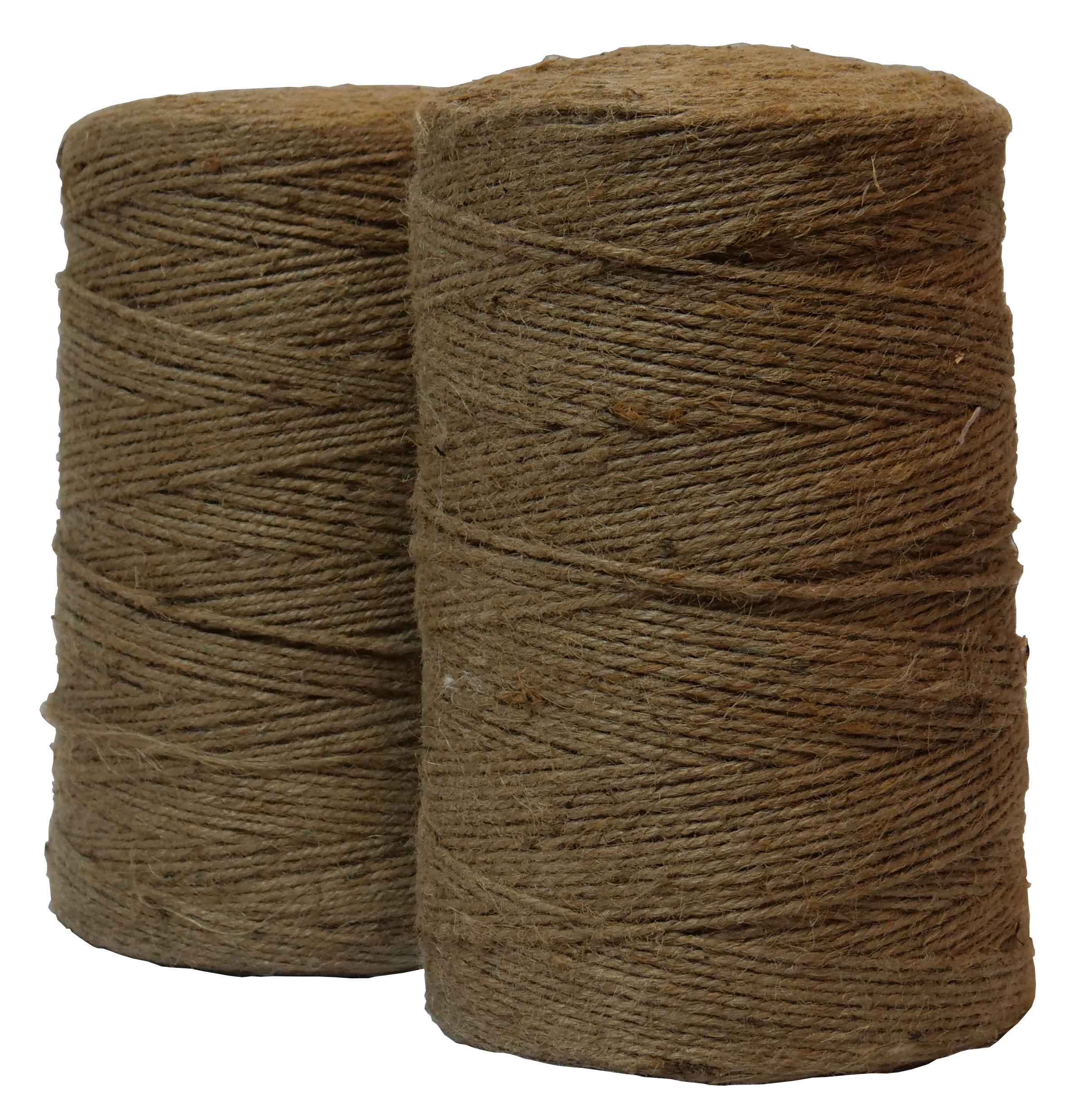Hemp Twine

When baling hay, one of the decisions a producer must make is what type of bale binding to use. Hay binding materials include hemp twine, polypropylene twine, sisal twine, net wrap and others. This blog will discuss hemp twine.
What is hemp?

Hemp is a plant with thin stalks and compound palmate leaves. Its flowers are small and greenish yellow. Though hemp originated in central Asia, it is now grown in temperate regions throughout the world. Not to be confused with cannabis, the source of marijuana, industrial hemp is harvested for its fibrous material and edible seeds.
Hemp plants harvested for their fibers typically reach six to ten feet in height. Just after reaching maturity, the stalks of the hemp plant are retted (a process of controlled decomposition), dried, and crushed to separate the long fibers from the rest of the stems. These long, typically greenish-brown fibers are then woven to produce twine, rope, canvas, burlap and more.
Can I use hemp twine for baling hay?
Hemp twine is a natural option for binding hay. Advantages of hemp twine are that it is digestible and biodegradable. Refuse plastic twine and net wrap can litter feedlots and barns for years since it does not degrade. Furthermore, a study conducted by North Dakota State University found that accidentally ingested net wrap and plastic twine remained in a cow’s rumen for upwards of 14 days. Natural twines do not have this effect.
While net wrap and plastic twine can be stronger, hemp twine is durable enough for the small round bales produced by our Ibex TX31 Mini Round Balers. You just have to be sure that the hemp product you are buying is of full weight and full length. A bargain price isn’t a good deal if the twine is weak.
Some hay producers are concerned that hemp twine might rot too quickly. This should not be a problem for hay stored indoors or under cover. In this environment, if your hemp twine is rotting, your hay is likely past its prime anyway. For bales left in the field as feed, biodegradability is actually a perk. You won’t be finding refuse twine wrapped around animals’ necks or your wagon’s wheels for years to come.

Some farmers use a clever feed management strategy with bales bound by natural fiber twine. For the last baling of the year, mini round bales are not collected, but instead left in the field, where livestock graze through the winter. Livestock quickly learn that as the twine rots off the bottom of the bale, the small round bales can be nudged over to expose fresh, nutritious hay. Since the bales are randomly scattered throughout the field, livestock don’t congregate in one area thus reducing wear and compaction on the field and improving spring regrowth. Farmers report that this management strategy results in better utilization of the late season hay crop versus leaving long growth through the winter.
At Tractor Tools Direct we have found that many of our Ibex TX31 Mini Round Baler customers prefer hemp twine for their hay operations. They like to avoid plastic in their feedlots for environmental reasons and prefer hemp’s biodegradability, digestibility, and environmental friendliness. For that reason, the starter rolls of twine we provide with our mini round balers are hemp. We are proud to be one of the few in the industry to provide hemp twine. To learn more about our twine offerings please visit our website at https://tractortoolsdirect.com/hemp-baling-twine-roll-approx-2300/ or give us a call at 260-BALE-HAY today!
Sources
https://www.britannica.com/plant/hemp
https://www.agriculture.com/family/living-the-country-life/choosing-baling-twine
Recent Posts
-
Haying Independence
In this month’s blog, let’s take a deeper look at the foundation of what we here at Tractor To …Apr 1st 2024 -
Be On the Cutting Edge of Modern Market Gardening Using Raised Bed Systems: FULL-TILL, MINIMUM-TILL, and NO-TILL
Market gardening is the production of vegetables, fruits, flowers and other plants on a scale larger …Mar 1st 2024 -
No Loader? No Problem.
So you have a compact tractor on your small farm, but you don’t have a front loader. Maybe price put …Feb 1st 2024




